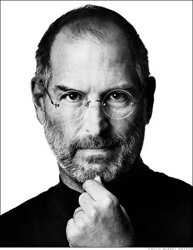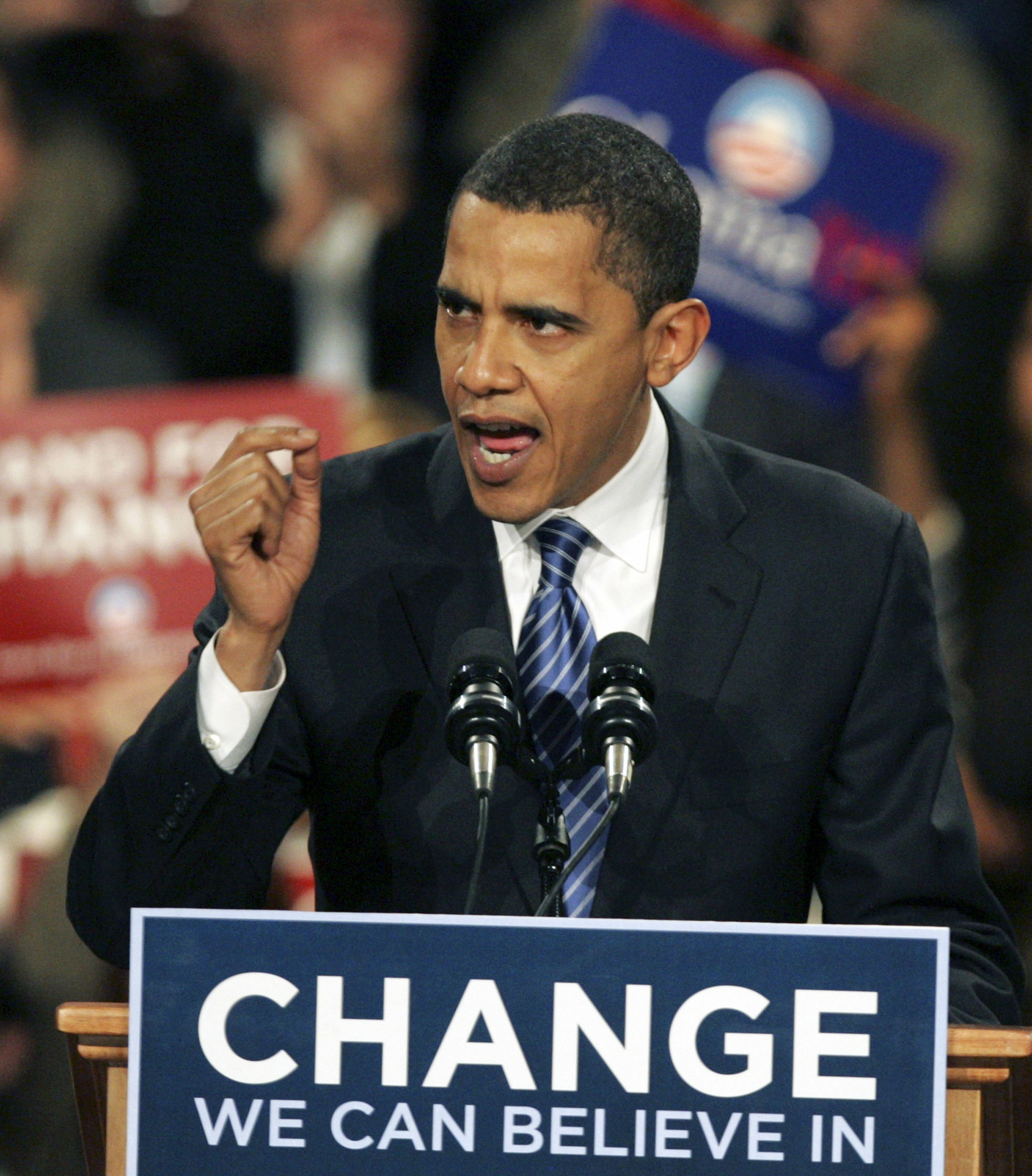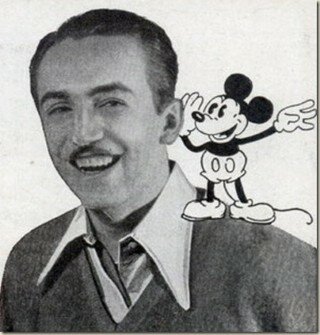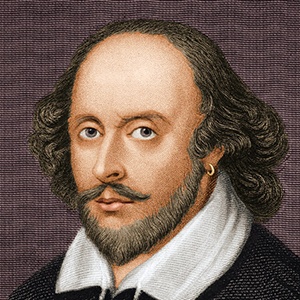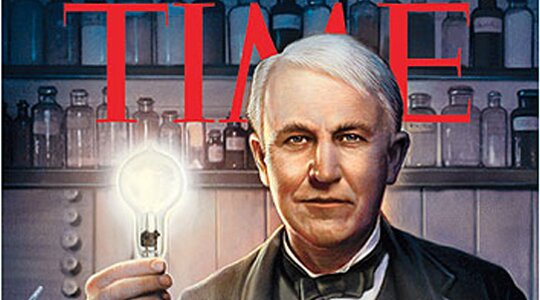 We’ve all heard of Thomas Edison, the iconic inventor, businessman and world changer, placed up there with the likes of Henry Ford, Steve Jobs and Albert Einstein. During his lifetime, he created some world changing inventions; such as the light bulb, and began industries; such as playable (on-demand) music, which we would be unable to live without today.
We’ve all heard of Thomas Edison, the iconic inventor, businessman and world changer, placed up there with the likes of Henry Ford, Steve Jobs and Albert Einstein. During his lifetime, he created some world changing inventions; such as the light bulb, and began industries; such as playable (on-demand) music, which we would be unable to live without today.
Thomas Edison achieved a huge amount in his life and did a lot for the human race. He once said “Genius is 1% inspiration and 99% perspiration” and think we can all learn something from the great inventor, visionary and businessman he was.
Thomas Edison: Life Biography
Thomas Alva Edison was born on the 11th February 1847 in Milan, Ohio to parents Samuel Ogden Edison, Jr. and Nancy Mathews Elliot. His father was of Canadian origin but was forced to run away from Canada following his part in the unsuccessful Mackenzie Rebellion of 1837.
Edison’s mind often wandered during school and his teacher was overheard calling him ‘addled’. Following this, Edison’s three months of official public schooling ended and he began being home taught by his mother, who was an accomplished teacher herself. “My mother was the making of me,” he later recalled, “She was so true, so sure of me; and I felt I had something to live for, someone I must not disappoint.”
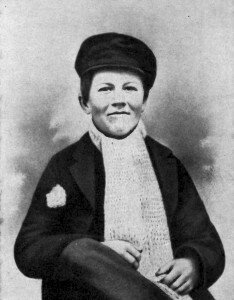 It’s said a lot of the young Edison’s education around these times came from reading R.G. Parker’s School of Natural Philosophy and The Cooper Union. He gathered a wide interest in education and information, and read lots of books on a wide variety of subjects.
It’s said a lot of the young Edison’s education around these times came from reading R.G. Parker’s School of Natural Philosophy and The Cooper Union. He gathered a wide interest in education and information, and read lots of books on a wide variety of subjects.
It was during this time that he developed the skills to self-educate and research for himself, something which would later be invaluable in his work, life and ventures. He also developed hearing problems around this age, leaving him nearly deaf as an adult. The cause of this was later blamed to a spell of scarlet fever and several recurring and untreated middle-ear infections.
Edison’s family moved to Port Huron, Michigan in 1984 after local business declined following the railroad bypass of Milan. Once there, Edison’s business journey began and he started selling newspapers and candy on trains running from Port Huron to Detroit. He also conducted a variety of chemical experiments whilst on the train, demonstrating his early scientific and innovative mind. However, these were soon stopped following an accident which took place.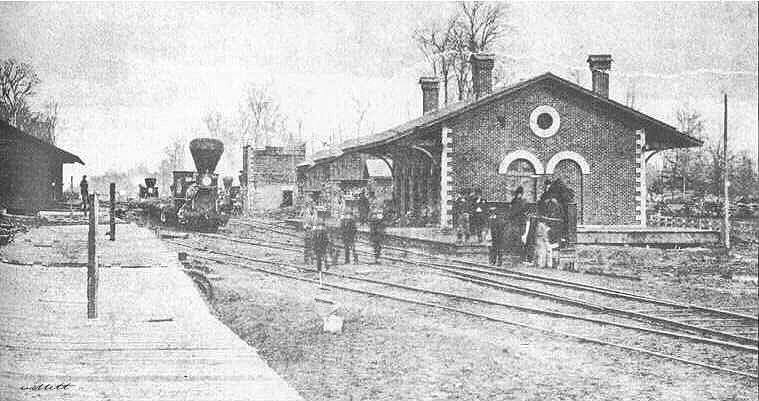
But back on the business front, he’d gained the exclusive rights to selling newspapers on the railroad, but he didn’t stop there. With the help of his four assistants he began to produce his own paper, the Grand Trunk Herald and sold it with his other papers, something which became a big hit with the passengers onboard.
He’d discovered and realised his talents as a businessman now and this was just the beginning of his business life, which would later include the founding of 14 companies and the beginning of General Electric, one of the biggest publicly traded companies in the world.
Progression into Work
While working on the rail road, a near-tragic incident left Edison with a little good and the initial spark leading to his future in electronics. Having saved a 3-year-old from collision with an oncoming train on the railroad, the child’s father rewarded Edison with teaching him how to use the telegraph.
By age 15, he had become well acquainted with using the telegraph and knew enough to be employed as a Telegraph operator.
During this time, he travelled the Mid-West of American as an itinerant Telegrapher and during his spare time, researched, studied and experimented with the telegraph technology and electrical science. This was the beginning of his journey in Electronics.
At age 19, Edison moved to Louisville, Kentucky and began working for the Associated Press. It was now 1866 and while on the night shift there, Edison got to spend plenty of time reading and experimenting, and developing his mind of thoughts and inquiry.
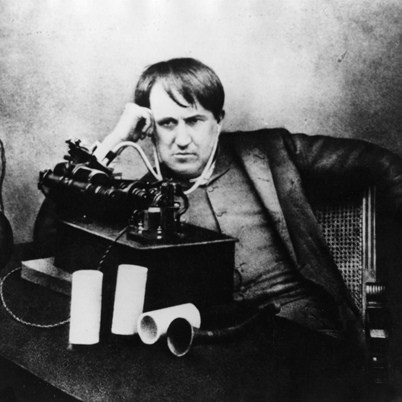 But technology was moving on and while Edison initially excelled at the Telegraph with its messages being inscribed on paper, they were no more and had become more common to use noises and clicks to communicate their messages, leaving the near-to-deaf Edison to a disadvantage. He became increasingly unable to find employment and in 1868, returned home to find his mother was falling into mental illness and his father was out of work.
But technology was moving on and while Edison initially excelled at the Telegraph with its messages being inscribed on paper, they were no more and had become more common to use noises and clicks to communicate their messages, leaving the near-to-deaf Edison to a disadvantage. He became increasingly unable to find employment and in 1868, returned home to find his mother was falling into mental illness and his father was out of work.
With the startling impact of his family’s situation upon him, Edison realized and concluded that he needed to take control of life and secure his future. He thus ventured to Boston, America’s centre for science and culture at the time, and landed a job for the Western Union Company.
When he wasn’t working, he was designing an electronic voting recorder for speedy tallying votes in the legislature, but after completion and patenting, lawmakers were not interested due to political reason. He’d seemed to of thrived here in Boston, but it wasn’t long before Edison was on the move once more.
His Becoming of an Inventor
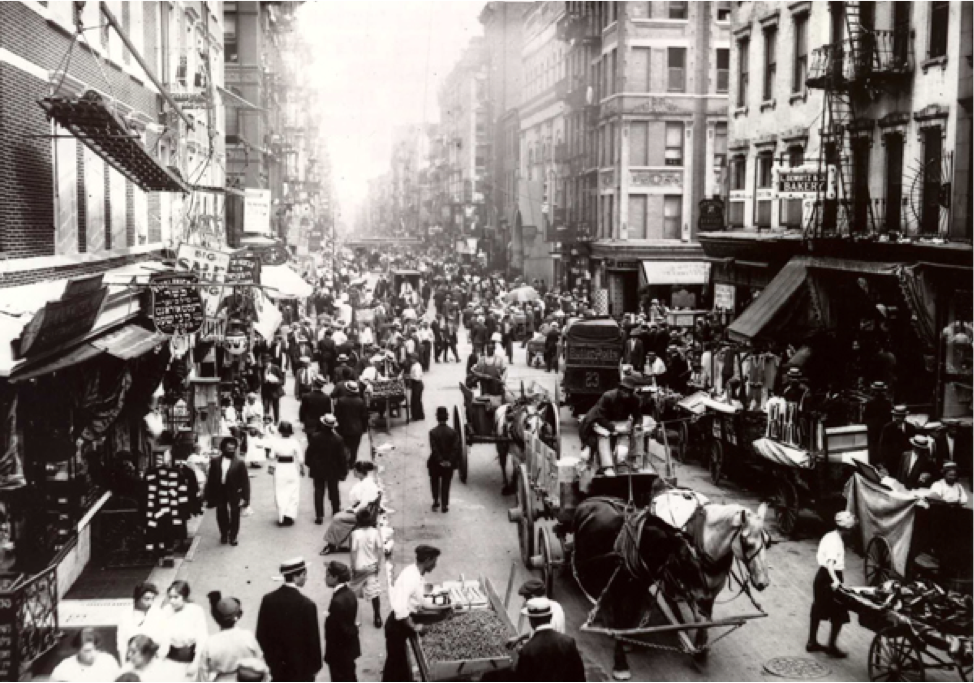 In 1869, Edison moved to New York City and developed his first real and successful invention, now at the age of 22. It was an improved stock ticker called the Universal Stock Printer, which synchronized several stock tickers’ transactions.
In 1869, Edison moved to New York City and developed his first real and successful invention, now at the age of 22. It was an improved stock ticker called the Universal Stock Printer, which synchronized several stock tickers’ transactions.
The Gold and Stock Telegraph Company was so impressed with his invention, they paid Edison $40’000 for the rights. He quit his work as a telegrapher after this and began working fulltime on his inventions.
Edison used the money to set up his first laboratory and manufacturing facility situated in Newark, New Jersey in 1870 and employed several machinists. It was a first for its time and was what we would now call an Incubator.
Edison formed several partnerships, and began developing and producing his products for the highest bidder, most commonly the Western Union Telegraph Company, an industry leader.
Starting of a Family
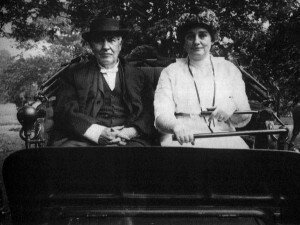 With increasing financial and recognizable success, Edison married 16-year-old Mary Stilwell, an employee at one of his businesses in 1871. They would go on to have three children during their 13 year marriage: Marion, Thomas and William.
With increasing financial and recognizable success, Edison married 16-year-old Mary Stilwell, an employee at one of his businesses in 1871. They would go on to have three children during their 13 year marriage: Marion, Thomas and William.
William followed in his father’s footsteps as he grew up, also becoming an inventor. However in 1884 at the age of just 29, Mary died of a suspected brain tumour.
The Expansion of Invention
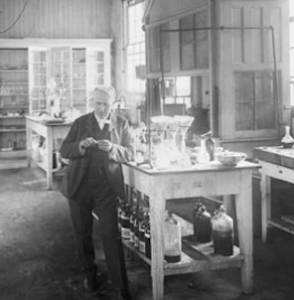 Going back to his inventions and back to 1870, just previous to his marriage with Mary, and Edison had gained a great reputation as an inventor. He’d produced some great inventions for various companies and realized that in the future he would need to expand.
Going back to his inventions and back to 1870, just previous to his marriage with Mary, and Edison had gained a great reputation as an inventor. He’d produced some great inventions for various companies and realized that in the future he would need to expand.
In 1876, he did just that and moved his expanding operation to Menlo Park, New Jersey, building an industrial research centre, including various machine shops and laboratories where he could move on to exploring and innovating in a variety of new areas.
One of these was the idea of being able to record and play sound, which he accomplished with the development of the phonograph in December 1877. And although the product was not commercially viable for vast distribution and use right away, it did go on to bring him worldwide fame and in a very large way, change the world to something much closer to the one we know of today.
The Edison Illuminating Company
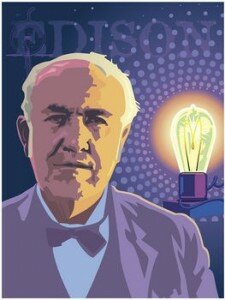 In January 1880, Thomas Edison was granted a patent for a revolutionary new invention, the light bulb, which would go on to change the world and how human civilization lived in it forever. It’s said that Edison’s light bulb was the original factor of kick starting the 24 hour world and lifestyles we live in today.
In January 1880, Thomas Edison was granted a patent for a revolutionary new invention, the light bulb, which would go on to change the world and how human civilization lived in it forever. It’s said that Edison’s light bulb was the original factor of kick starting the 24 hour world and lifestyles we live in today.
Following that, he set out to supply the needed electricity to power and now also light, the towns and cities throughout the world, and subsequently founded the Edison Illuminating Company, which later became General Electric Corporation.
By 1882, the Pearl Street generating station was providing 110 Volts of electrical power to 59 customers in lower Manhattan, but in 1884, as previously stated, his Wife, Mary died. However, he remarried again to Mina Miller just two years later in 1886.
In 1887, he built another industrial research laboratory in West Orange, New Jersey which became the primary research lab for the Edison lighting companies, but also where he came to perfect and finalise the phonograph, alkaline storage battery and motion picture camera. Three things that have been key in bringing the world to the tech and media evolving one it is today.
In the decades to follow, Edison fell into a role more aligned with that of an industrialist and businessman rather than inventor, but he did not halt upon in his ambitions to develop and improve on the world.
However, he struggled to manage the large and complex laboratory in West Orange and discovered that a lot of the development and design of his ideas was being done by university-trained mathematicians and scientists. It’s said he “worked best in intimate, unstructured environments” but with an environment of academic graduates and corporate style operations, he found it hard to cope.
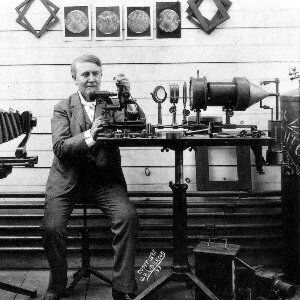
None-the-less, on April 23rd 1896, Edison became the first person ever to project a motion picture, doing so while holding the world’s first motion picture event in New York City.
Another invention of his to follow was the large storage battery, originally planned for the sole powering of the automobile, but eventually adapted for the self-starter Model T ford in 1912. It has since been used largely in automobiles prior and even with only a few alterations, up until today.
World War I & Edison’s Slow Retreat
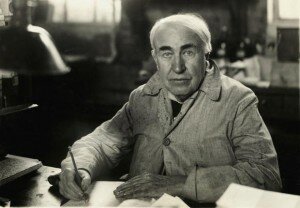 Thomas Edison was asked by the U.S. government during World War I to head the Naval Consulting Board, examining inventions submitted for military use. He agreed and worked on a variety of projects, including detectors for submarines and gun-location techniques during his time.
Thomas Edison was asked by the U.S. government during World War I to head the Naval Consulting Board, examining inventions submitted for military use. He agreed and worked on a variety of projects, including detectors for submarines and gun-location techniques during his time.
However, Edison had a strong moral umbrage against violence and specifically stated that he would only work on defensive weapons during his work. He once famously said “Non-violence leads to the highest ethics, which is the goal of all evolution. Until we stop harming all other living beings, we are still savages.” and later stated, “I am proud of the fact that I never invented weapons to kill.”
Thomas Edison began to slow down and retreat from his work by the end of the 1920’s. He was now in his 80’s and surely ready to finally retire if nothing else! He did, but not before applying for the last of his life’s patents, of which he’d had 1093 U.S. issued.
Edison went on to spend time with his wife at their winter home in Fort Myers, Florida and further developed on his relationship with the automobile tycoon of the time Henry Ford, working on a variety of projects including electric trains.
Death & Legacy
On October 18th 1931, Thomas Alva Edison died at the age of 84 years old of diabetes complication in his home in West Orange, New Jersey. Communities and companies throughout the world dimmed their lights (and some even turned off their power completely) in recognition of his passing and his life.
 Thomas Edison had become a folk hero in America over his life time and was in fact one of the most well-known and respected Americans in the world by the time of his death.
Thomas Edison had become a folk hero in America over his life time and was in fact one of the most well-known and respected Americans in the world by the time of his death.
He was well known as a businessman amongst the corporate world, being named as a ‘tyrant’ to employees and ruthless to competitors. However, in ambition and obsession with his innovative and business side, he had neglected his family a fair bit to. Something we commonly see in people throughout history of huge success and revolutionary impact.
But none-the-less, by the time of his death, at 84 years old not to forget, Edison was known as one of America’s leading businessmen and today is recognised and credited for his part in helping to build America’s economy into the great one which it still is today, through the nation’s most early and vulnerable years.
He made perhaps several mistakes during his life, none higher than the neglect towards his family, but he also did a huge number of things right to. And in the end, he didn’t just leave our world, but he left it with a lasting legacy and impact, which still exists today.
Lessons from His Life
Thomas Edison as with all people in these posts is a hugely inspirational and influential person and there are many lessons to be learnt from his life, which which we have just read.
There is No Substitute for Hard Work
The first lesson, the value of hard work, is certainly not a lesson limited to just Edison and his life, but is one of incredible importance in the formula for our success, and I believe Edison is the perfect person to remind and re-teach us of its value to our success through his story.
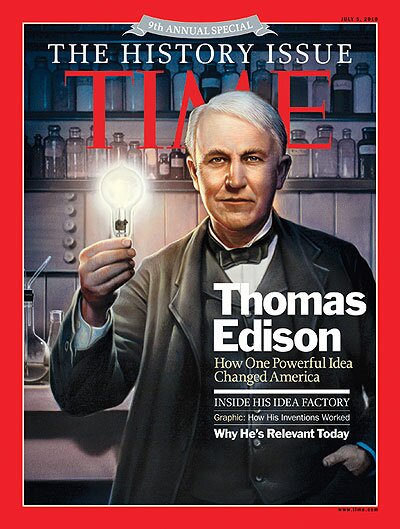 It’s quite clear in just reading and researching the life and achievements of Thomas Edison how much effort and work he must of put in to his dreams, his inventions and his businesses. He once said, “Opportunity is missed by most people because it is dressed in overalls and looks like work.” And to be quite frank, he’s right, even today.
It’s quite clear in just reading and researching the life and achievements of Thomas Edison how much effort and work he must of put in to his dreams, his inventions and his businesses. He once said, “Opportunity is missed by most people because it is dressed in overalls and looks like work.” And to be quite frank, he’s right, even today.
“There is no substitute for hard work.” He said, “I never did anything by accident, nor did any of my inventions come by accident; they came by work.” And work is as I said, not something demonstrated by Edison alone, but is something that I think is demonstrated by Edison at a whole other level.
He’d accumulated over one thousand patents by the end of his lifetime and had created hundreds of products during the 1800’s and early 1900’s, all of which were ahead of their time. He revolutionised and even created whole industries and did this only through good old hard work.
So from the demonstrations of Edison’s life and achievements, let’s remind ourselves of the importance of work and begin to follow in Edison’s footsteps on our own ambitions, ideas and projects.
Busy Doesn’t Mean Benefit
However, following on from the first lesson of work, it’s also important to remember that not all work is real work and just because you are busy, it does not mean you’re actually bringing benefit to yourself or anybody else.
And while this may seem like a small lesson, the issue that it touches on is actually an important one and one that often goes un-noticed. “Being busy does not always mean real work.” said Edison, “The object of all work is production or accomplishment and to either of these ends must be forethought, system, planning, intelligence, and honest purpose, as well as perspiration. Seeming to do is not doing.”
To reiterate, it’s important while working hard, to also work smart and do so on only the things that lead to production or accomplishment. Edison didn’t just work and spend his time on silly and mundane tasks, but he worked hard and smart on his inventing, his inventions and his businesses, leading to his portfolio of hundreds and even thousands of great products and accomplishments.
He planned, had the correct systems from experience in place, had purpose in what he was doing, the intelligence to push it through, and worked hard. It’s both working hard and working smart, which play the biggest parts in our success. That’s a lesson to remember.
Learn to Recycle & Pivot on Your Projects
As we’ve seen, Edison worked on a broad and considerable number of products during his life, all at different times, in different sectors and fixing different problems.
 He encountered a large number of problems with each, some predictably more then others, and once famously said, “I have not failed. I’ve just found 10’000 ways that won’t work.” However he learned to pivot on problems and his ideas, recycling them into other products and successes of which they wasn’t first intended.
He encountered a large number of problems with each, some predictably more then others, and once famously said, “I have not failed. I’ve just found 10’000 ways that won’t work.” However he learned to pivot on problems and his ideas, recycling them into other products and successes of which they wasn’t first intended.
“Just because something doesn’t do what you planned it to do, doesn’t mean it’s useless.” Edison once said. If you gain the ability to pivot on your projects and ideas, you’ll be able to not only save time, but potentially produce something even better then you ever first thought possible to, thus maximising on your efforts and success.
I have often done this myself, making a habit of recycling and pivoting my work and projects to ‘kill 2 birds with one stone’ as saying goes. Pivot on your ideas like Edison and you’ll be sure to produce more and maximise on your potential success in your life to.
Wrote by Joe Brown
